Courtesy of Atelier Zo
阿泰尔·佐(Atelier Zo)

架构师提供的文本描述。2012年底,一个混合小组为日本吉福米诺苗圃学校建造了一座木材建筑。该小组由Mokuiku示范项目小组、Atelier Zo、Gifu森林科学和文化学院以及Mino幼儿园社区组成,
Text description provided by the architects. In late 2012 construction of a timber building for the Mino Nursery School in Mino, Gifu, Japan was completed by a mixed group. The group consisted of a Mokuiku model project team, Atelier Zo, the Gifu Academy of Forest Science and Culture, and the Mino nursery school community,
Courtesy of Atelier Zo
阿泰尔·佐(Atelier Zo)
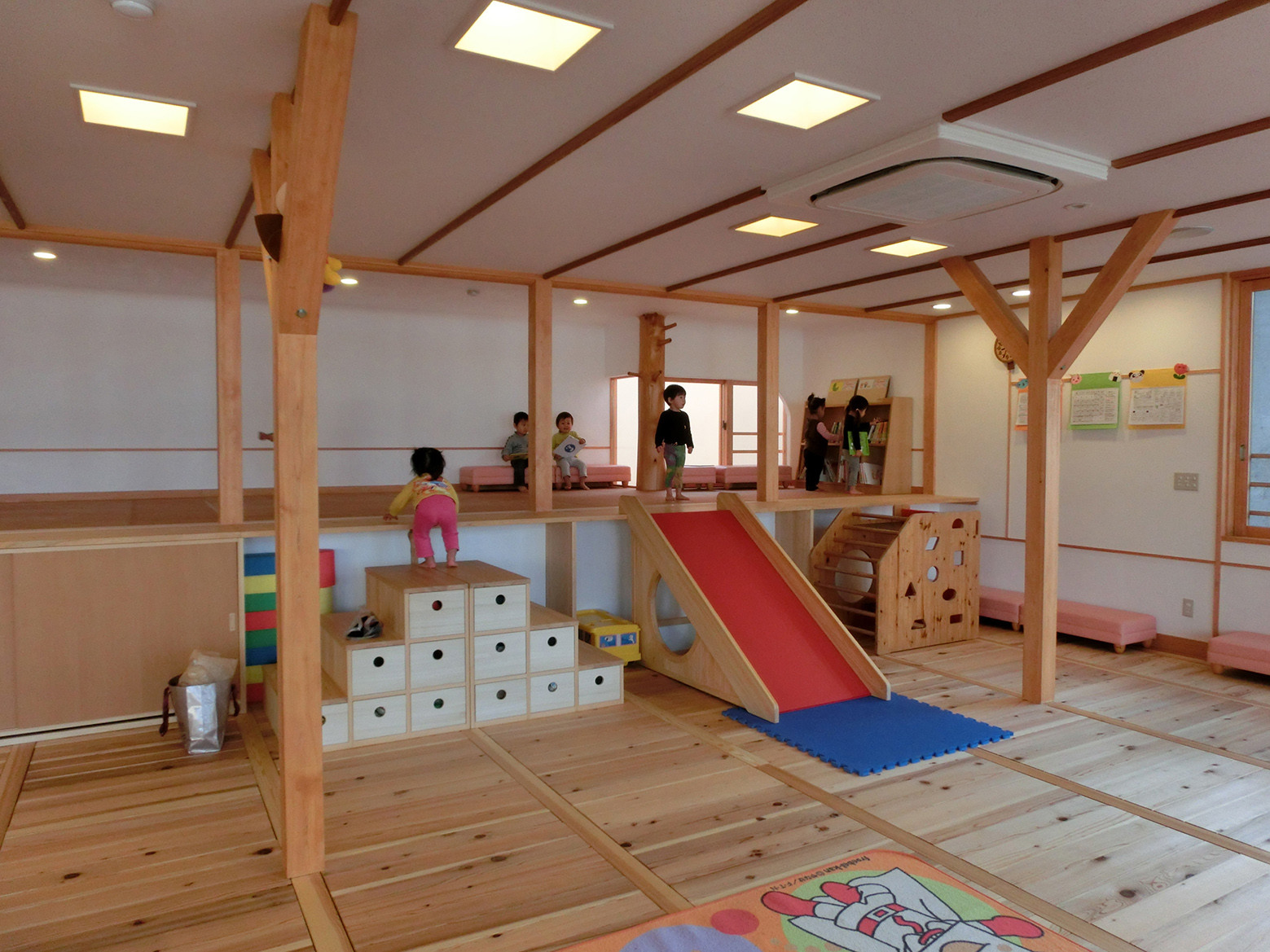
Mokuiku的意思是进行木材教育,使人们了解树木和森林及其利用的文化手段。由于日本是一个森林密集的国家,[1]木材既是一种资源,也是一种环境,深深植根于当地文化和传统技术之中。木库库建筑反映了一个以循环利用为导向的社会,是通过建筑、环境教育和林业科学之间的多学科研究建造木材建筑进行环境教育的一种手段。
Mokuiku means education in timber, leading to an understanding of trees and forests and of the cultural means of their utilization. As Japan is a highly forested country,[1] timber represents a resource, as well as the environment, and is deeply embedded in local culture and traditional techniques. Mokuiku architecture reflects a society oriented to recycling and is a means of environmental education through the construction of timber buildings via multidisciplinary research in the areas between architecture, environmental education and forestry science.
这个项目开始于确定木库库的设计细节在每个领域。以下是用于识别它们的关键因素。
This project started by identifying Mokuiku design detailsin each discipline.The following are the key factors that were used for their identification.
低碳生活方式
low-carbon lifestyle Human resources for Satoyama area forestry science and culture biomass resources forestry health and conservation community planning local wood & timber materials; manufactured materials recycled materials local construction techniques wood barking & seasoning techniques architectural perimeter-less design method hybrid service systems
Courtesy of Atelier Zo
阿泰尔·佐(Atelier Zo)
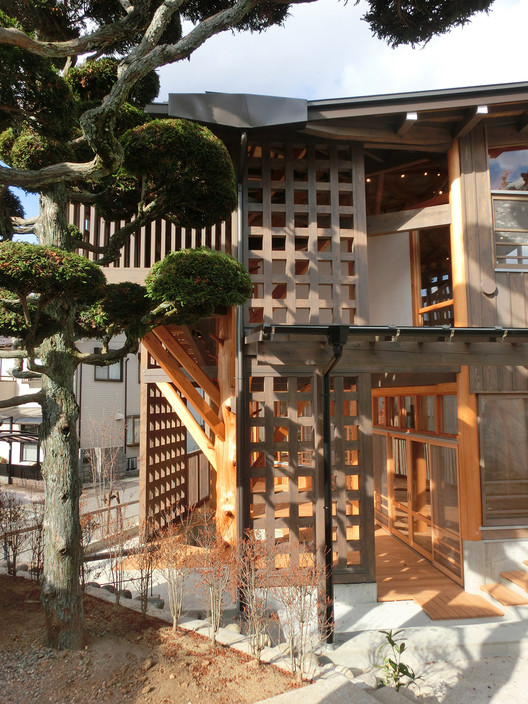
这些民族志、历史、技术和科学的参考资料是设施设计的基础,根据这些资料,米诺托儿所项目旨在作为一种创新设计,采用我们称之为“当地生产供当地消费”的办法,以建立一个文化和环境可持续的社区。
These ethnographical, historical, technical and scientific references were the basis of the facility design.With this information the Mino Nursery School project was intended as an innovative design using an approach we called ‘local production for local consumption’, for a culturally and environmentally sustainable community.
米诺幼儿园位于大纳加拉河沿岸的米诺市,四周环绕着群山。这所学校也是Zenno-ji的一部分,这是该地区最古老的禅宗寺庙。主要的设计理念是平衡这些文化和历史的参考。低矮的屋檐表达了传统的氛围,为城市景观做出了贡献。
Mino nursery school is located in Mino city, which lies along the Great Nagara River and is surrounded by chain of mountains. The school is also a part of the Zenno-ji, which is the oldest Zen temple in the area. The main design idea was to be in balance with these cultural and historical references. Low and deep eaves express the traditional ambience and contribute to the townscape.
Courtesy of Atelier Zo
阿泰尔·佐(Atelier Zo)
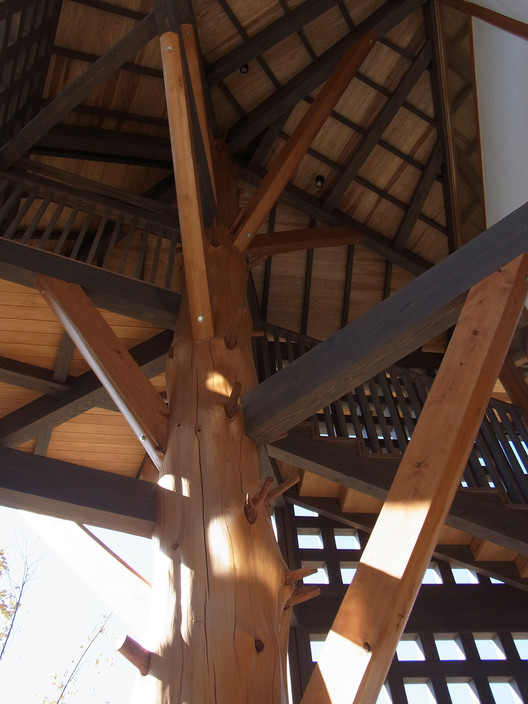
主要框架由近200年的本土柏木制成,经过自然调味处理。有内部分支的五根本土柏木柱在框架内表现出独特的空间,并在外部与该地区周围的群山产生共鸣。该遗址是一个由东向西自然形成的斜坡。利用这一优势,可以直接进入地下室和底层。因此,在不违反建筑规范的情况下,柱和梁的暴露木材设计是可能的。游戏室覆盖着柏木板,育婴室里堆满了当地的材料,如松木和阔叶树板、当地灌木和竹子工艺品,以及传统的柿子漆米诺汉纸。
The main frames were made out of nearly 200 year-old native cypress with natural seasoning treatment. Five native cypress columns with internal branches express unique spaces within the frames and externally resonate with the surrounding mountains in this area. The site is a naturally formed slope from east to west. This was taken advantage of for providing direct access to both the basement and the ground floor levels.. Because of this an exposed timber design of columns and beams was possible without contravening the building code.. The playroom is covered with cypress boards and the nursery rooms are full of local materials, such as pine and broad-leaved tree boards, local shrubs and bamboo crafts and traditional Mino-hon paper with persimmon lacquer.
Courtesy of Atelier Zo
阿泰尔·佐(Atelier Zo)
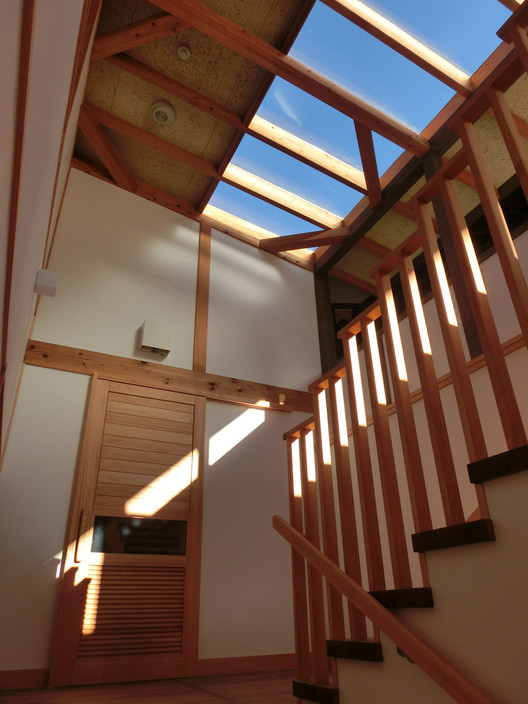
此外,该设施使用天然太阳能、地热和生物质能。所展示的木库库建筑以21世纪C的知识、技术和工艺,代表了一个特定的地方、它的环境和它的文化。
Moreover, this facility operates with natural solar, geothermal and biomass energy. Mokuiku architecture as demonstrated represents a specific locality, its environment and its culture with 21st C knowledge, technology and technics.
[1]陆地森林覆盖率为68.2%。粮农组织2005
[1]68.2% of the land forest covered. FAO 2005
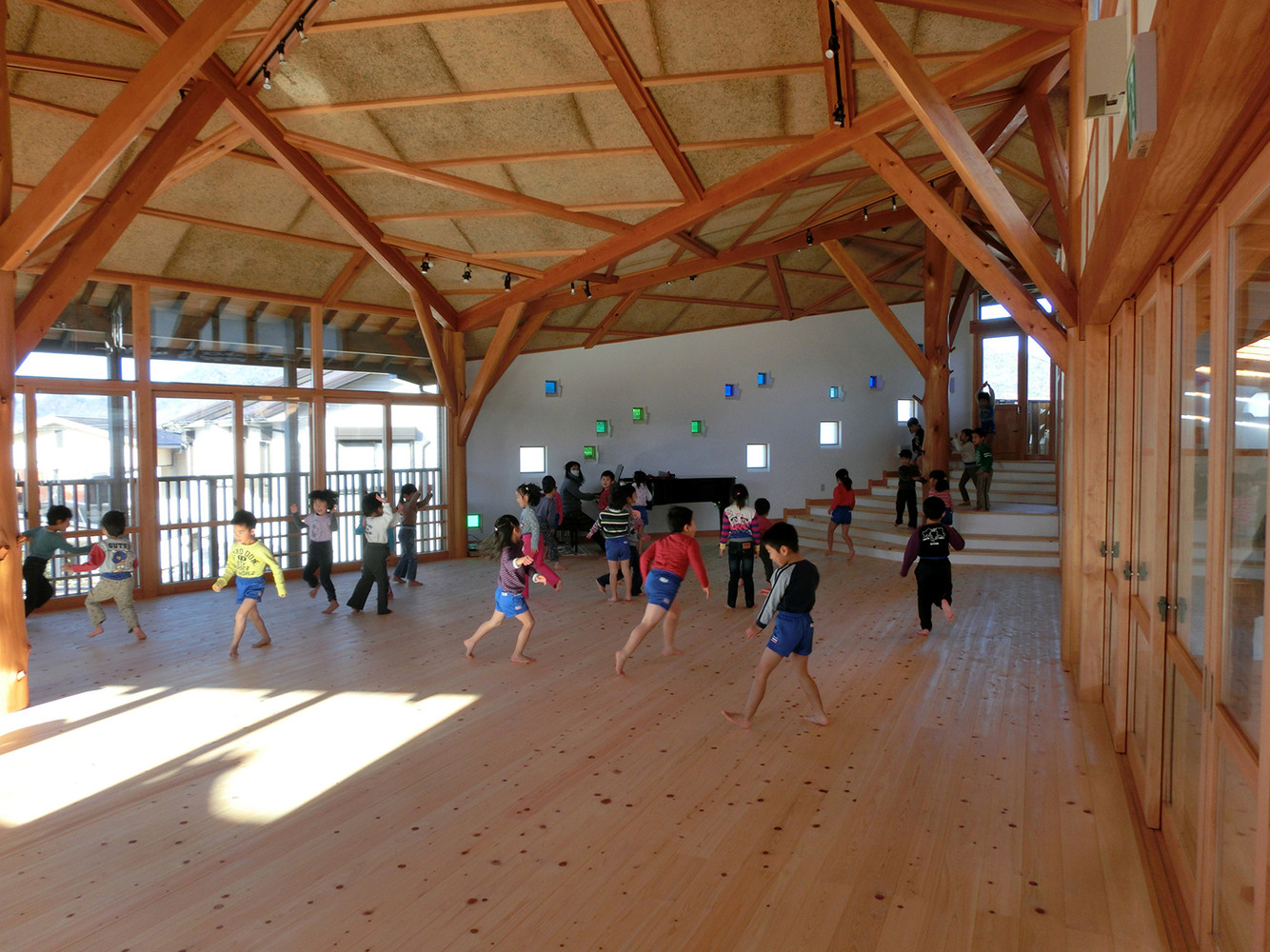
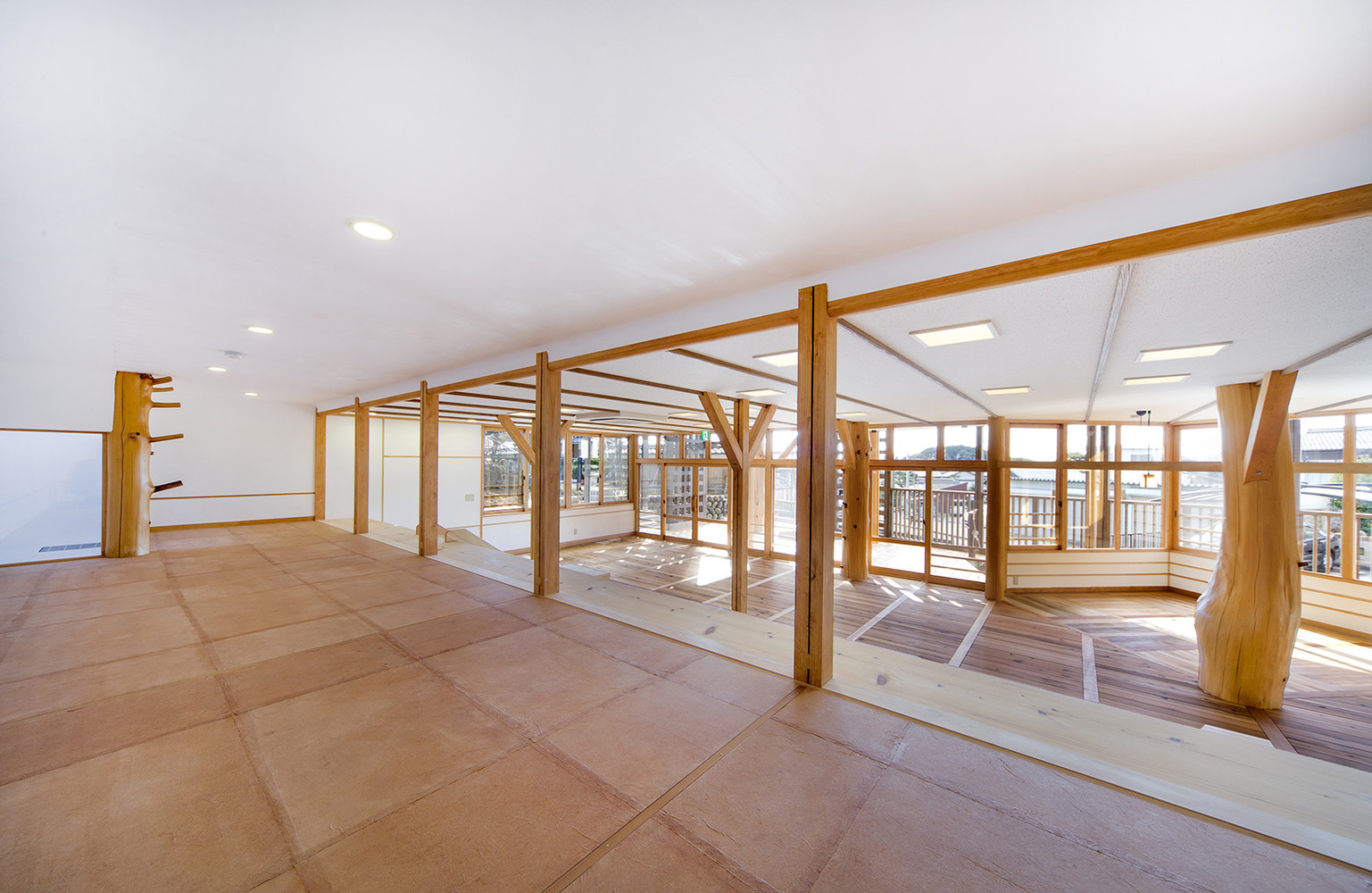

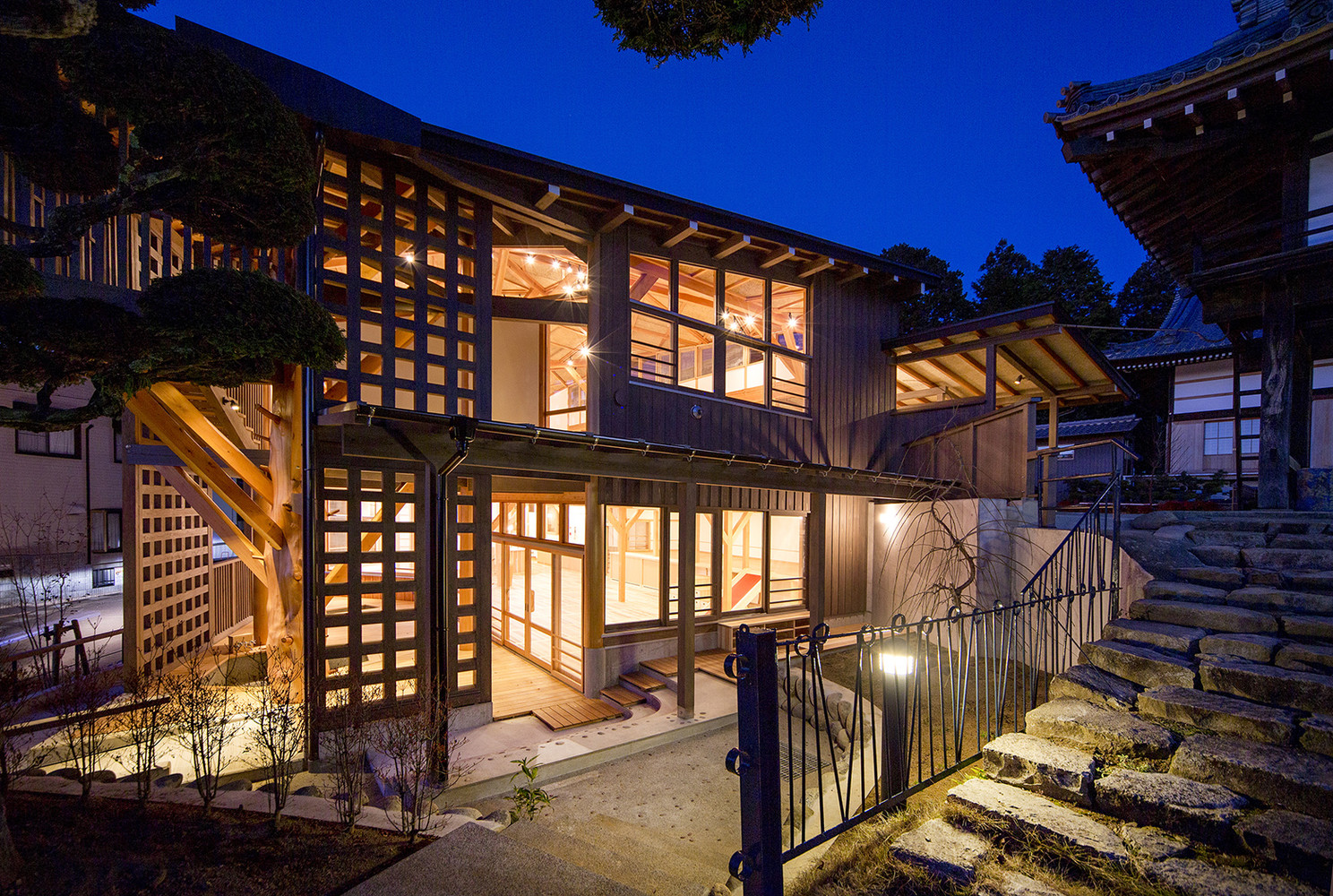
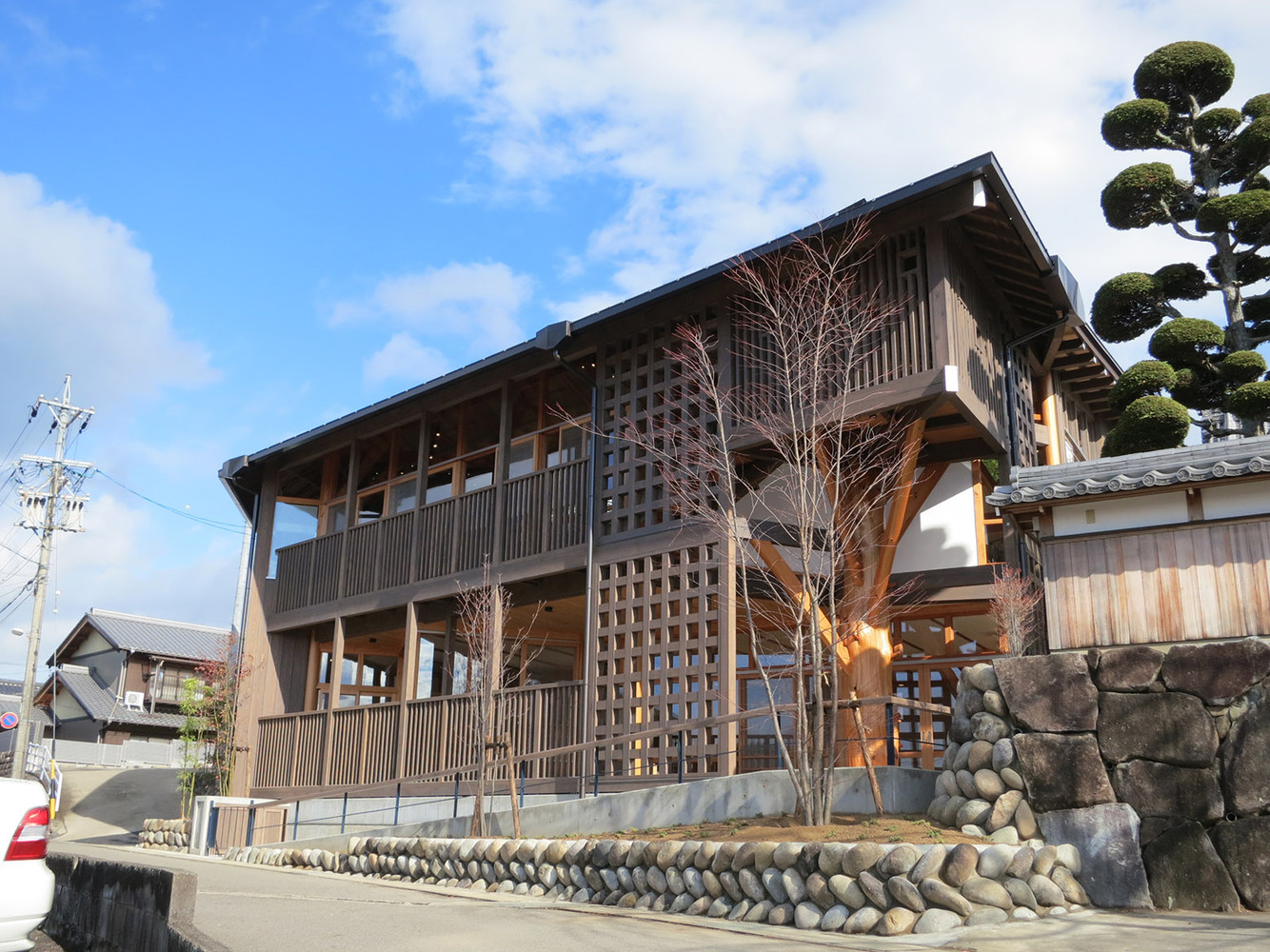
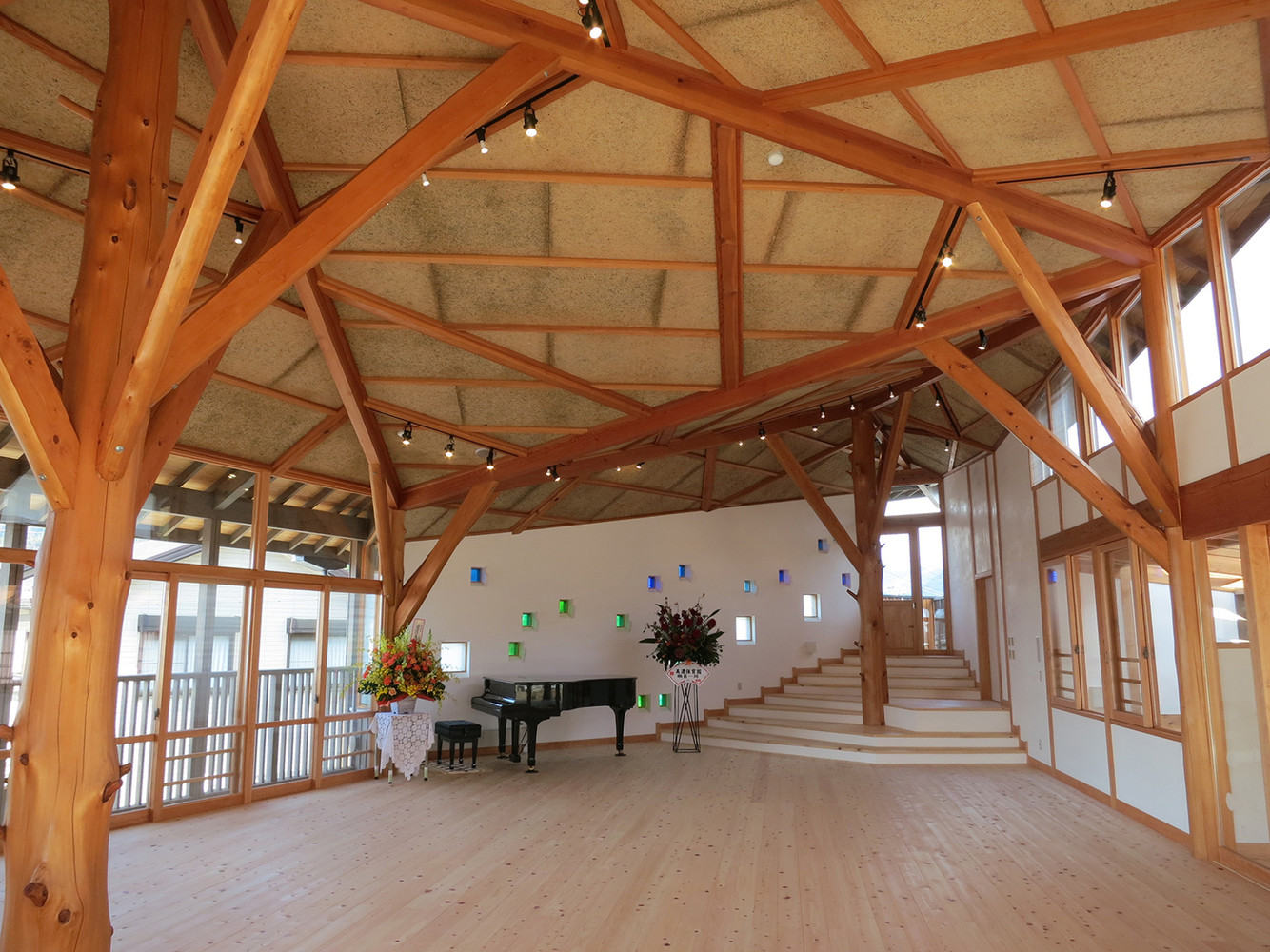
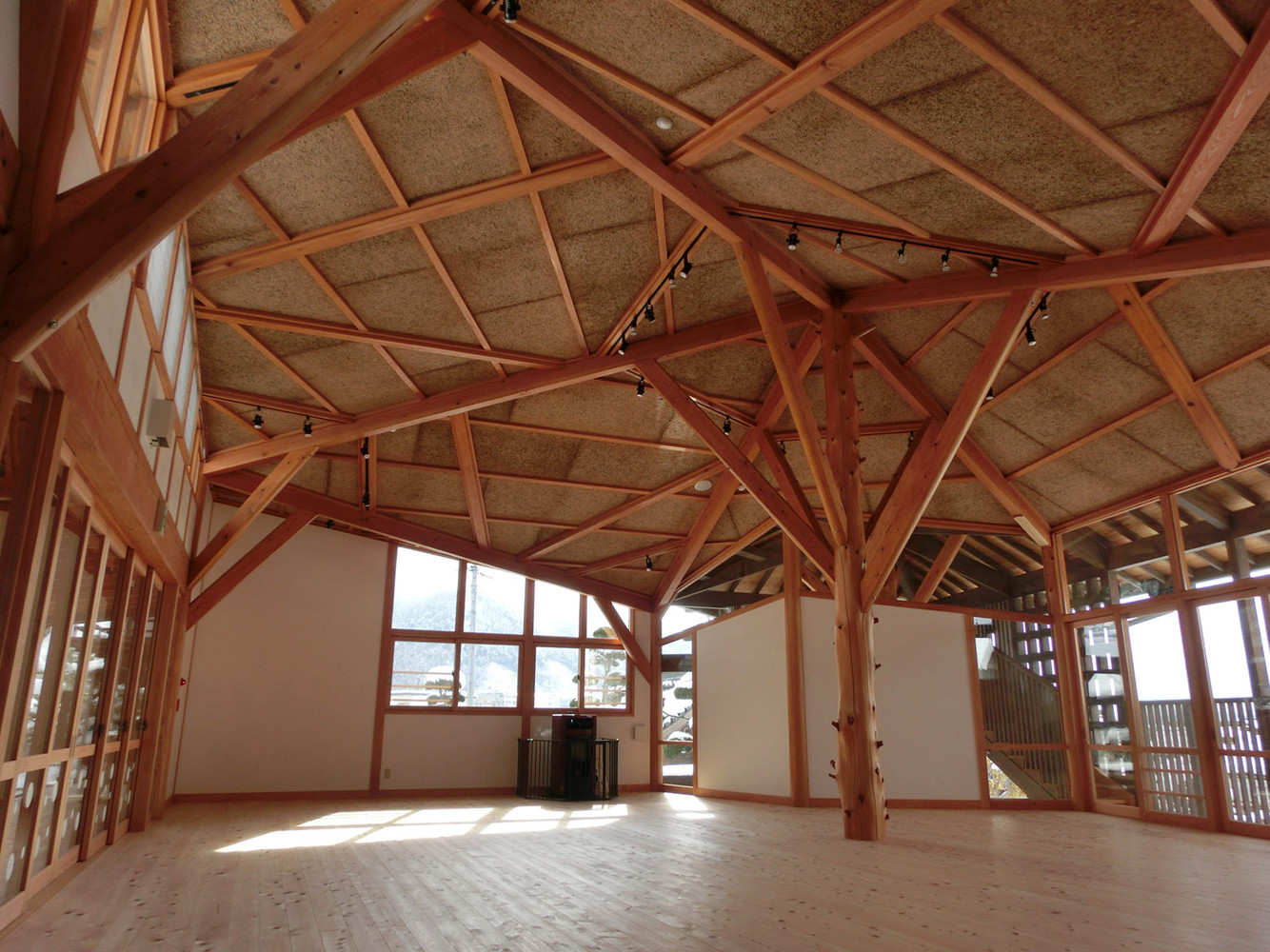





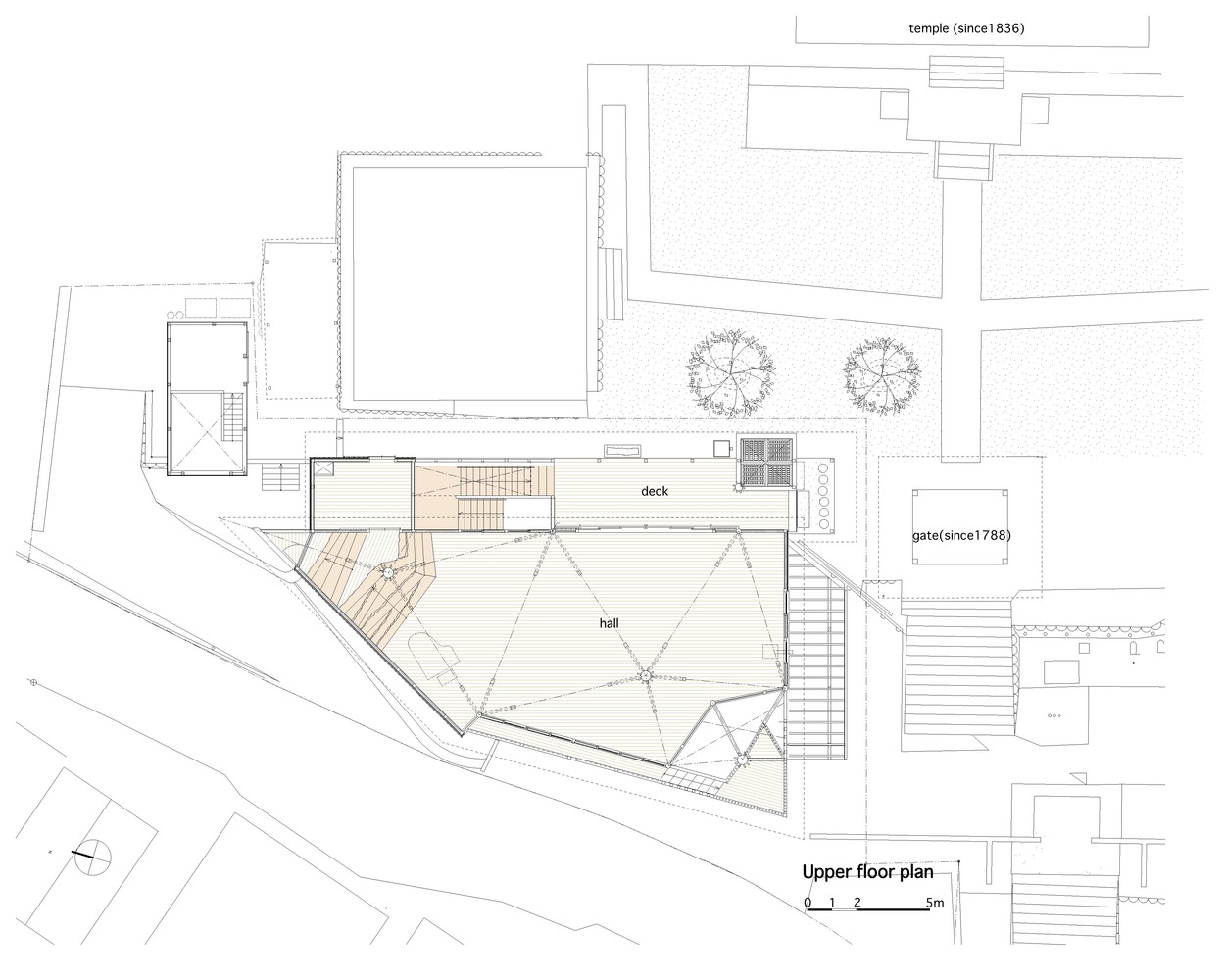
Architects Atelier Zo
Location Mino, Gifu Prefecture, Japan
Category Schools
Area 473.0 sqm
Project Year 2012
